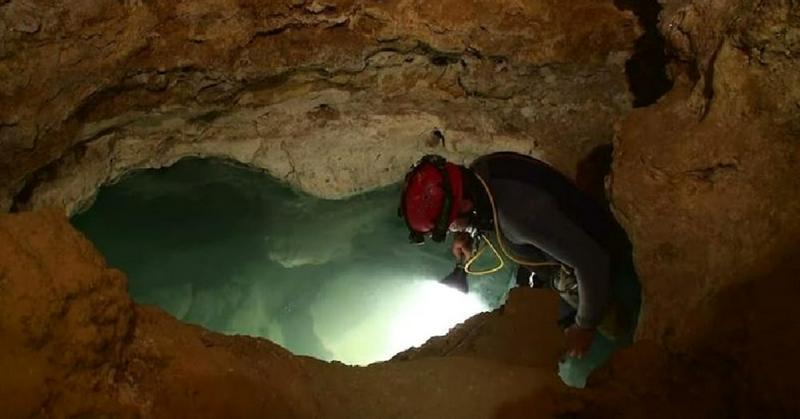33 New Species Found In A Poisonous Cave Untouched By Humanity For Five Million Years
By | June 22, 2020

Let's go back about 5.5 million years, about the time that the latest common ancestor of humans and chimpanzees roamed the Earth and 33 species of insects and other creepy crawlies made their way into a small cave just southeast of Romania. Next to the Black Sea and the Bulgarian border, the Movile Cave has been shut away by a limestone slab for more than five million years. In that time, it became poisonous to humans even as it provided a habitat to creatures that don't exist anywhere else on Earth. Spiders, scorpions, and all manner of strange insects thrive in Movile Cave, all thanks to a dense soup of bacteria.
Found By Accident
It's likely that Movile Cave would still be closed up if workers in communist Romania hadn't been trying to find a place to construct a power plant in 1986. As the workers tested the ground at the end of the Cold War, they came across the strange cave. Romanian scientist Cristian Lascu was the first person to make the 65-foot descent into the cave, kept company only by the headlamp on his helmet. After scaling the narrow limestone caverns, Lascu came to an underground lake inside of a cavern, where most of Movile's inhabitants make a home for themselves.

Nowhere Else On Earth
For a small cave in southern Romania, Movile is absolutely popping off with life. As of 2015, 48 distinct species lived inside the cave, 33 of which don't exist anywhere else on the planet. The evolution of these species have taken some strange turns in such a limited environment: Most inhabitants of Movile Cave are born without eyes, they're all nearly translucent, and their appendages and antennae are extra long in order to help them get around in a world that's completely dark.

Maybe Stay Away
If the creepy crawlies aren't enough to keep you away, keep in mind that just because it's such a hospitable environment to bugs doesn't mean it welcomes humans. Researchers can get inside, but the deeper you climb into the cave, the harder it is to breathe. The air down there contains half the oxygen as the air above ground, so anyone descending into the cave has to wear a breathing tank, and after about five hours, they have to leave before their bodies just give out. The cave is also extremely humid, warm, and smelly, thanks to all the sulphide in the water.

Living On A Prayer (And Bacteria)
Researchers were initially confounded by these creatures' survival because they couldn't seem to find any food lying around. They soon discovered a frothy layer of bacteria that's known as an "autotroph," or an organism that can form organic nutritional substances from simple inorganic ones such as carbon dioxide. Microbiologist Rich Boden explained:
These bacteria get their carbon from carbon dioxide just like plants do. The carbon dioxide level in the cave is about 100 times higher than normal air. But unlike plants, they obviously can't use photosynthesis as there is no light ... They get the energy needed ... from chemical reactions, the key ones being the oxidation of sulphide and similar sulphur ions into sulphuric acid or the oxidation of ammonium found in the groundwaters to nitrate.

How Did They Get There?
With so many different species in one cave, it's hard to tell exactly how they all got into the same place. Some scientists think climate change in the northern hemisphere caused the Mediterranean Sea to dry out, pushing animals to seek a more sulfurous place to live. It's possible that they just hunkered down in Movile Cave and never left, but they could have just as easily been trapped in the cave by accident. For now, there's no way to look into the cave and get a solid answer.

A Treasure Trove
As the Earth's climate grows more inhospitable by the day, Movile Cave offers the unique opportunity for researchers to observe an environment that's rich in greenhouse gases and bacteria that can oxidize those gasses. It's possible that the foamy layer of bacteria in the cave holds the key to removing gases like methane and carbon dioxide from the atmosphere.
Aside from offering possibilities for avoiding a global climate disaster, the cave also acts as a kind of time machine for researchers. They believe that the conditions inside are similar to those at the dawn of time, and it's possible that many of the first living cells were like those that can be found in this strange little cave.

